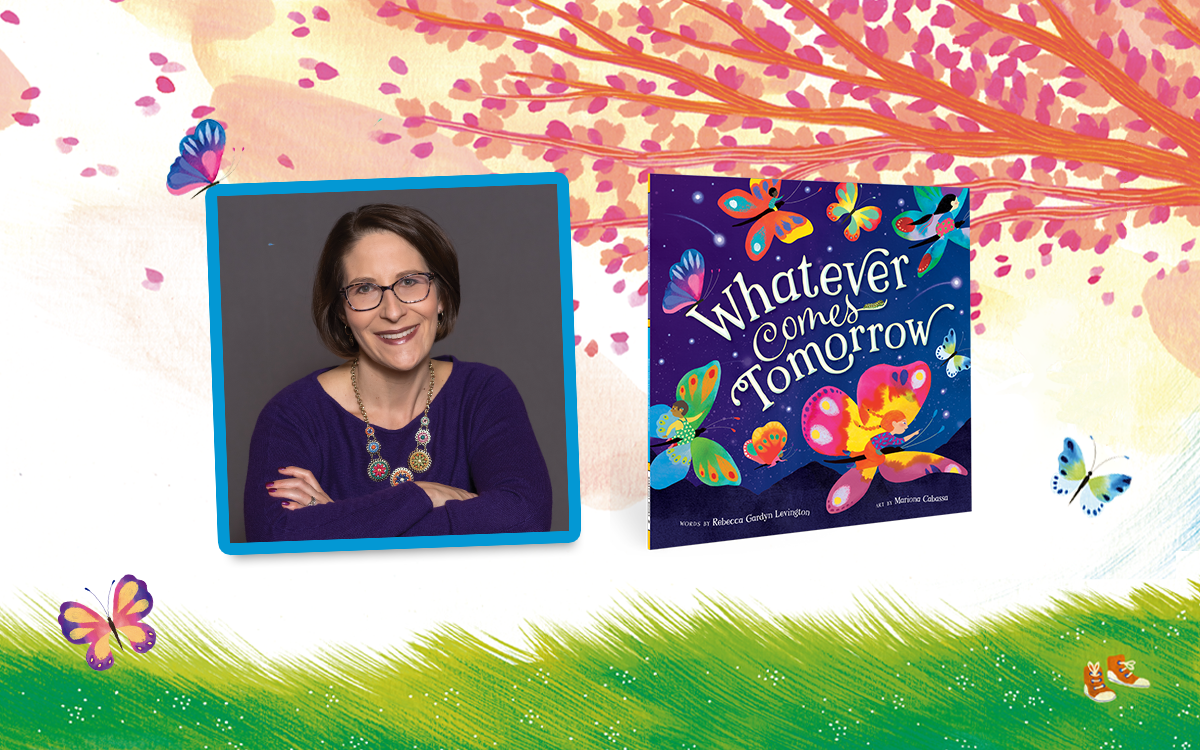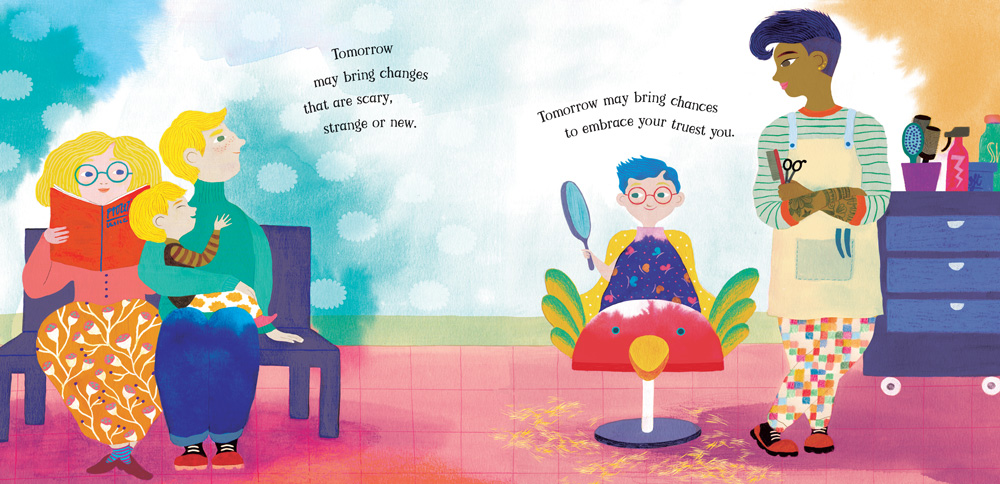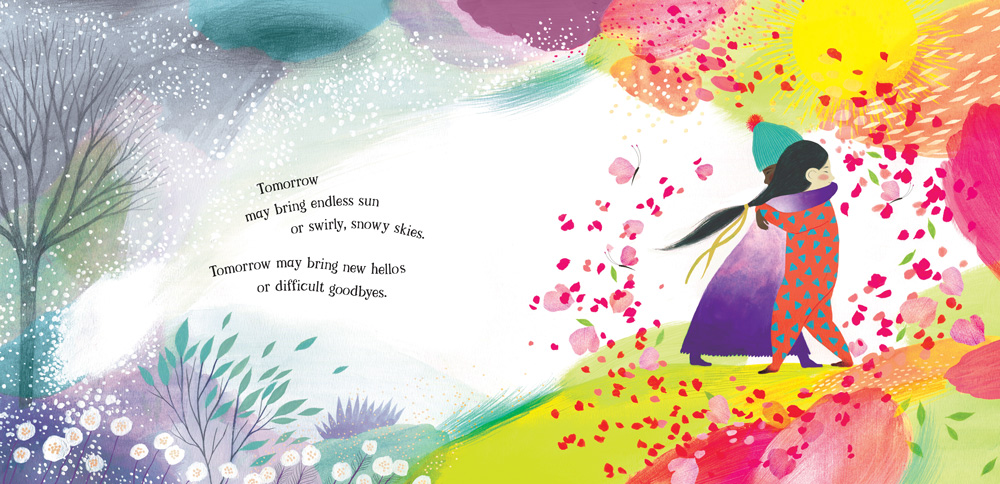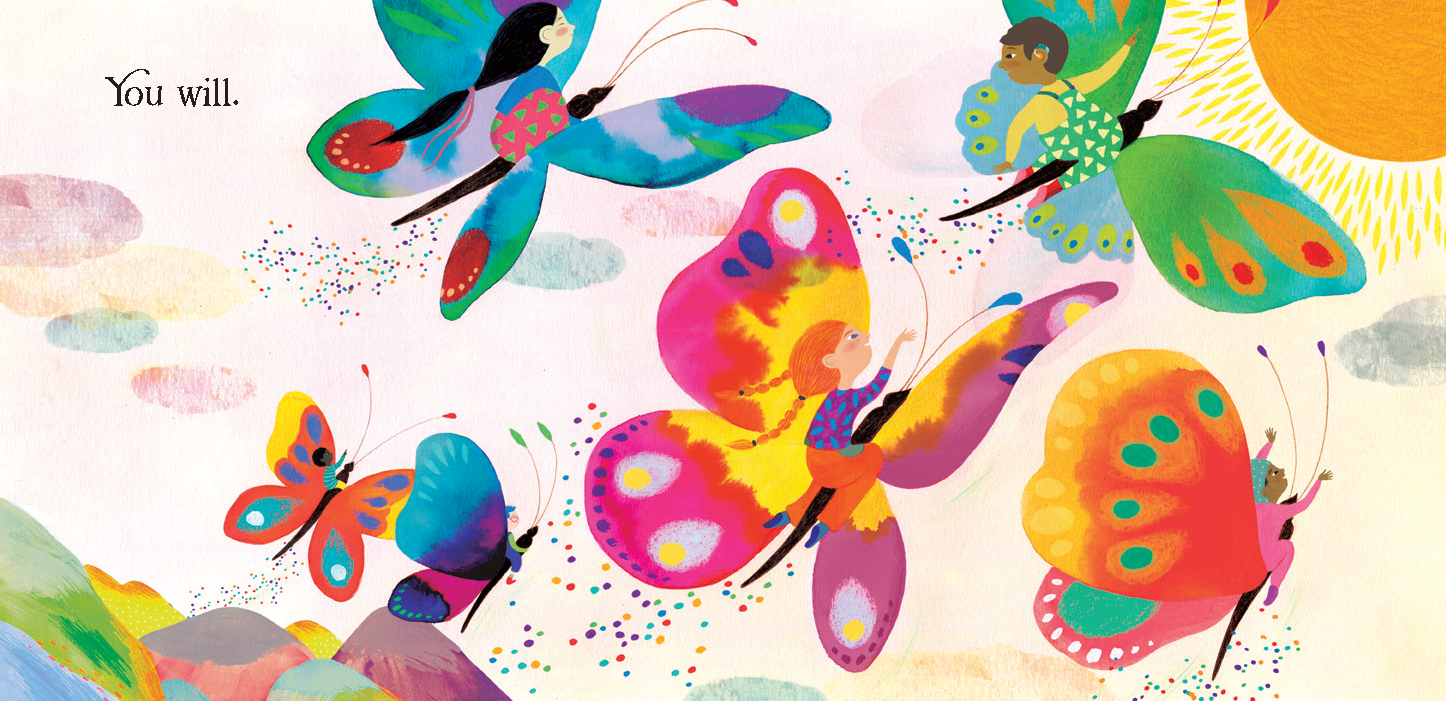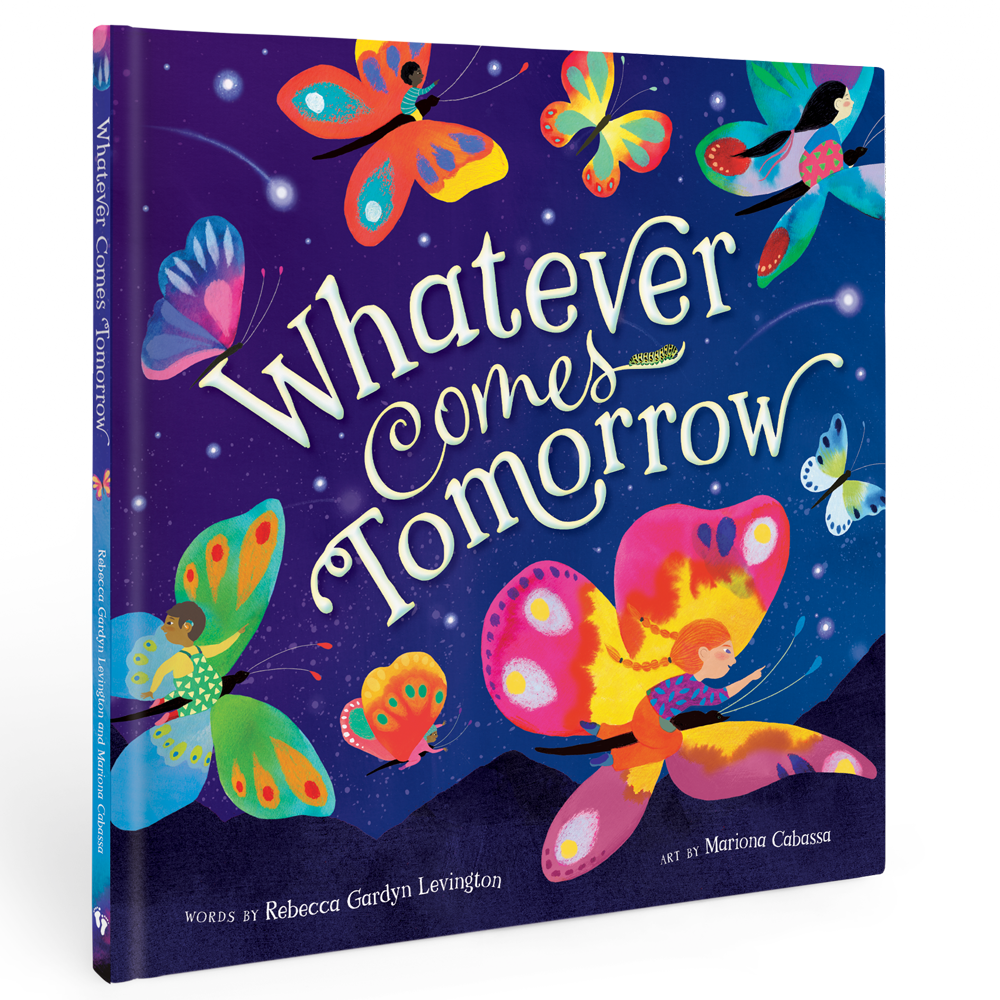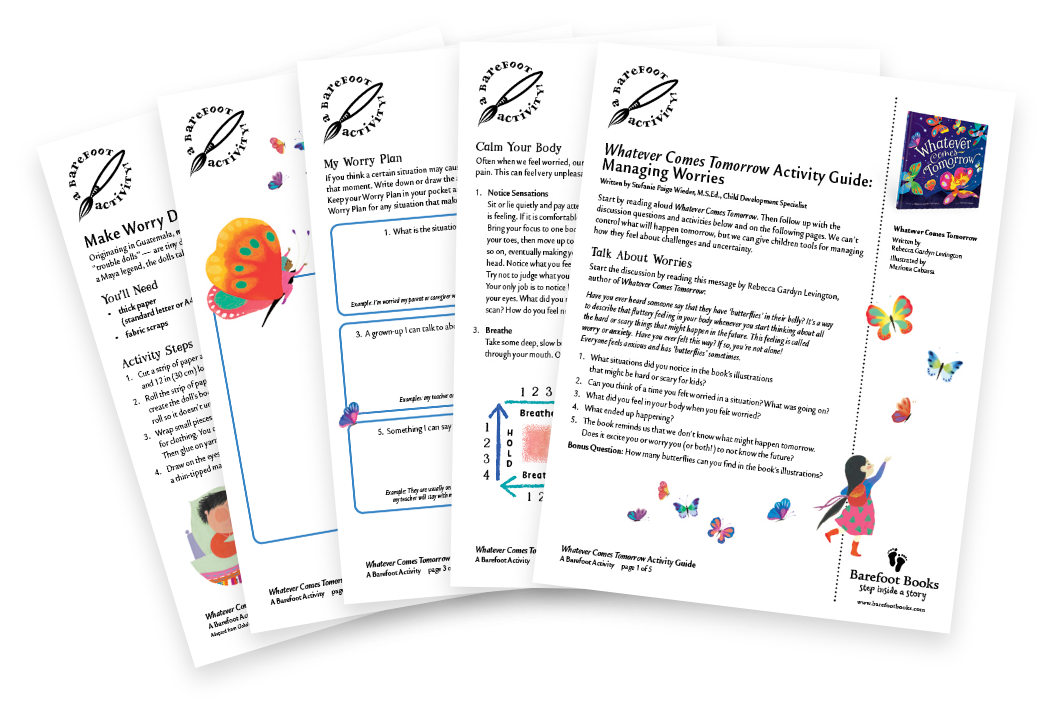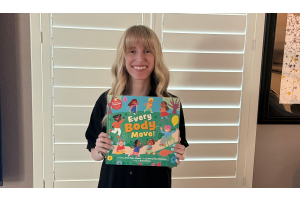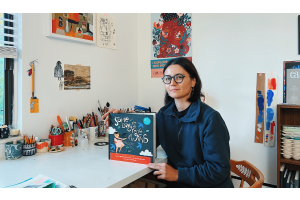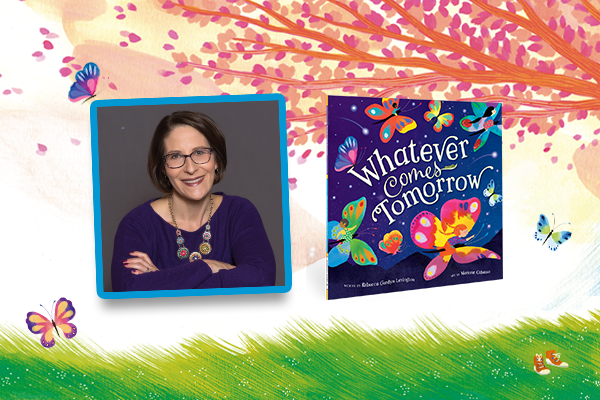
Rebecca Gardyn Levington is a children’s book author, poet and journalist with a particular penchant for penning both playful and poignant picture books and poems – primarily in rhyme. Rebecca’s award-winning poems and articles have appeared in numerous anthologies, newspapers and magazines. Her new picture book, Whatever Comes Tomorrow is about learning how to deal with worries, no matter what tomorrow brings, and is based on her own struggle with anxiety.
When did you first realize that you struggled with anxiety? What do you wish you had known then?
For as long as I can remember, even as a very young child, I’ve always craved structure, order, and rules. I found safety and comfort in predictability, and any unexpected change to my schedule or routine made (and still makes) me uncomfortable, sometimes sending my whole body into a state of panic.
I have always been a planner. I like to know what lies ahead of me at any given time. As I mentioned, I do not like surprises. But, as a child, I had no idea that these behaviors were symptoms of “anxiety.” I’d never heard that word until I began seeing a therapist in college and that’s when I finally had a name for the feelings I’d grappled with my whole life.
I wish, as a child, that I’d understood that I was not alone and that other people felt the way I did inside. I wish I’d been offered tools to help me manage my uncomfortable and worry-filled feelings so I could better enjoy and participate more spontaneously in life! I wish I’d known that I had a choice NOT to allow those feelings to control me. I wish I’d known there were things I could do to help my mind and body control them.
What was your process for writing this book? How long did it take to write?
Like many of my picture book manuscripts, Whatever Comes Tomorrow began as a short poem. I participate in a Poem-A-Week Challenge with three of my critique partners and every week we take turns picking a word to inspire a poem. On the week of Nov. 18, 2020, the word was: “surprise!” As I brainstormed about what to write my poem about, I started thinking of all the unexpected surprises we experience in life and how we never know what tomorrow might bring.
Once I’d written the initial six stanza poem, I realized that I might have a picture book on my hands. Over the next few months, I added, tinkered, and received input from many critique partners. Finally, by March 2021, I had a polished draft that I felt comfortable sending out into the world.
Did the book change significantly from the original manuscript to the final book, and if so, in which ways?
Yes and no!
“No,” because the poem was always called Whatever Comes Tomorrow. The rhyme scheme, meter, and refrain (“Tomorrow may bring…”) haven’t changed at all from the original poem.
But also “Yes,” because while the poem began as a simple musing about the surprises that life throws our way, it quickly (by drafts two and three) got much deeper. I started to think more about how I personally dislike any “surprises” (and did so, even as a child). And when I thought about why, I realized how much that dislike is connected to my struggles with anxiety and fears of the unknown.
(The word “surprise,” by the way, ended up getting cut in later drafts. In fact, the only stanza that has remained from the original is: “Tomorrow may bring questions that you have no answers for, or questions that may lead you to more questions than before.” Everything else has changed. In all, there were about twenty drafts of the story.)
There was a point (around drafts six or seven) when I questioned whether the story needed more of a structured narrative arc and wondered if I needed to choose a specific storyline to guide the illustrator. I ended up creating one version that was specifically about a child going through the divorce of her parents and all the unknowns that brings. And I wrote yet another version about a child who had to move far away from her home and friends. But after more tinkering and more feedback, I realized that I wanted this book to be more universal and also to allow room for the illustrator to bring in her own interpretation of my words. (And I’m SO happy I did because Mariona’s art is brilliant!)
But even after the book was “final'' and acquired by Barefoot, I made several changes. With the help of my wonderful editor, Lisa, I tweaked some of the language to be sure it resonated with readers both in the US and UK, since the book will be released simultaneously in both markets. I also created a whole new stanza that better matched Mariona’s illustration on one of the spreads.
What was your reaction to seeing the illustrations for the first time?
My reaction? In a word: WOW! I was so grateful that Lisa and I had a very similar vision for the book from the get go. We discussed wanting a poetic, lyrical artist who could match my poetic, lyrical text, but also one who could create concrete images that would make the meaning understandable and accessible to young readers. It was a very tall order, but Mariona is a true magician! I am in awe of her talents. And I haven’t even mentioned her use of color yet! Isn’t it just gorgeous?!
Research shows that anxiety in children is on the rise. What can parents and teachers do to support children?
I’m not a psychologist or therapist, so I can’t give any expert-level advice. But as a child who went through her entire childhood undiagnosed and now as a mother of two children myself, I can only say this: listen to your kids and watch their behaviors. If you notice that they consistently allow their worried feelings to keep them from participating fully in their life, talk to them about it. Ask them about their fears. Ask them about their worries. Ask them what you can do to help. And then, remind them. Remind them about all the times that they worried about something, only to find it wasn’t a big deal! Remind them about all the times they worried about something and it ended up being a HUGE deal (maybe they even failed or did terribly!) but yet they STILL managed to get through it. Remind them that, while they can’t control what happens in the future, there are things they can do to help control how they react right now. Remind them that this too shall pass.
There are so many wonderful activities and tools available to help kids manage their worries, including the ones we’ve introduced throughout the text and in the back matter of Whatever Comes Tomorrow. If it is available, I also recommend seeking out a trained professional to help provide additional support and guidance.
What do you hope readers will take from this book?
Whatever Comes Tomorrow is essentially a poetic mantra, written to myself and to all the children (and adults) like me who struggle with anticipatory anxiety, people who worry constantly about the “what ifs,” who panic at any unexpected change or disruption to their normal routine, big or small – a new sibling, a friend moving away, a substitute teacher, a fire drill…a pandemic.
I hope that readers take away from this book that no matter what happens tomorrow – be it good, bad, or in-between – they will find a way through. We have all done or faced hard things in the past and we will continue to do and face hard things in the future. We are stronger than we give ourselves credit for and we have many tools – not to mention friends and family – to help us. We will never be able to predict what surprises lay ahead for us, but we DO know that, for better or worse, tomorrow will soon be yesterday. We can, and we will, endure whatever comes tomorrow. So, while we still have it, let’s try to enjoy today!
Anything else you’d like to add?
Yes! If you look closely, you’ll see that there is at least one butterfly (sometimes hidden!) on each spread of the book. This was done with great intention, but only after tons of collaboration.
It all began with Mariona’s very first set of sketches when, in one of her spreads, she had depicted a caterpillar turning into a butterfly to go along with the stanza: “Tomorrow may bring changes that confuse or make you mad/Tomorrow may bring confidence you never knew you had.” Neither that text nor Mariona’s initial illustration made it into the final version of the book, for various reasons, but the idea of butterflies seemed to stick in all of our minds.
When I received Mariona’s sketch of the final spread, with the children all riding on the backs of their butterflies, I had an “AHA!” moment. I’m not sure if it was intentional (you’ll have to ask Mariona!) but to me, all I could see was this gorgeous metaphor of butterflies as worries (all those “butterflies” we feel in our belly when we are nervous). To me, the kids riding on the backs of their butterflies represent how they have finally learned a way to manage their worried feelings.
I loved this idea so much that I asked Lisa if we could lean into this metaphor even more and she, in turn, asked Mariona to incorporate at least one butterfly into every spread throughout the book. In the end, the butterflies (and the little caterpillar!) even made it onto the cover.
This book was a true collaboration and a meeting of so many beautiful minds. I am so grateful and honored to have been a part of it!
About Whatever Comes Tomorrow
Written by Rebecca Gardyn Levington | Illustrated by Mariona Cabassa
“In rhymes that first acknowledge and then reassure, Gardyn Levington counsels fortitude in the face of the unknown” – Publishers Weekly
“An inspiring, visually appealing read filled with tools to help manage uncertainty” – Kirkus Reviews
We might not know what the future holds, but the lyrical rhyming text in this beautiful book reassures readers that they have the resilience and strength to face whatever comes their way. Whimsical illustrations make for a captivating read-aloud or bedtime story. Inspired by the author’s own experience with anxiety, this book offers gentle wisdom applicable to both children and adults. End matter includes a discussion guide and activity ideas for managing worries.



